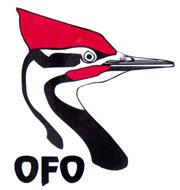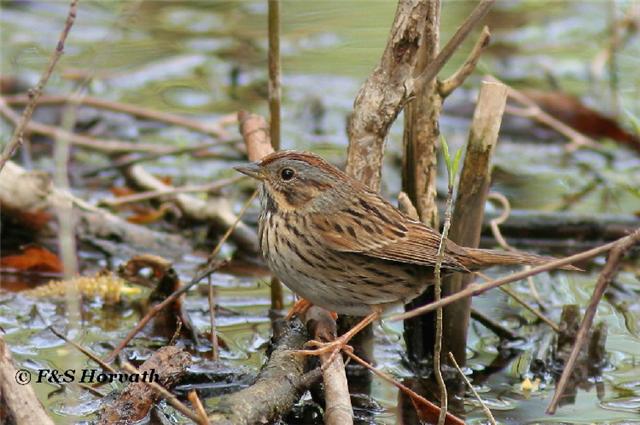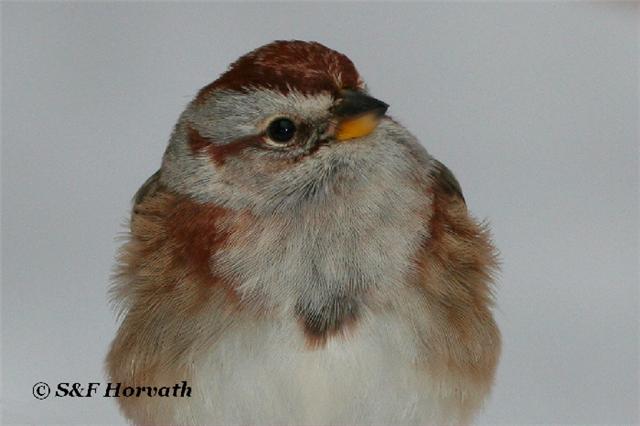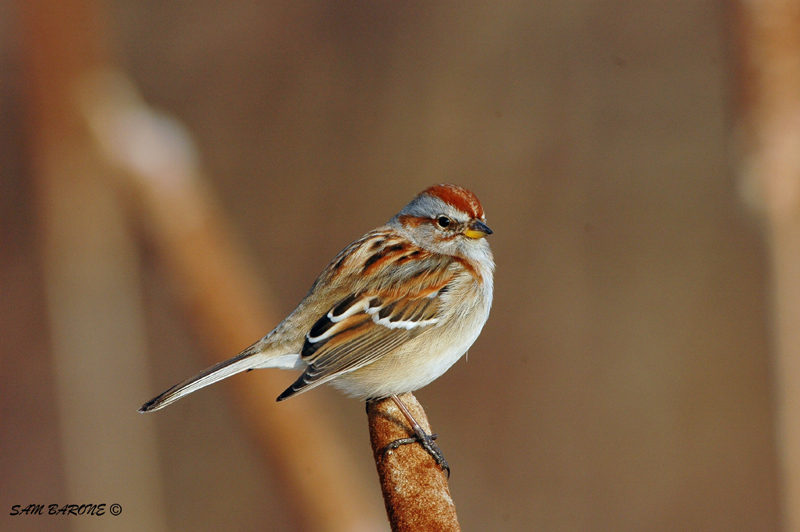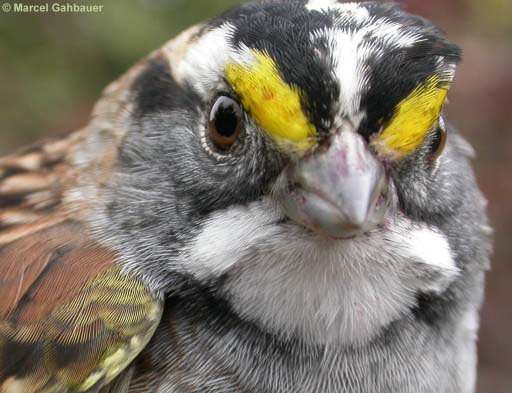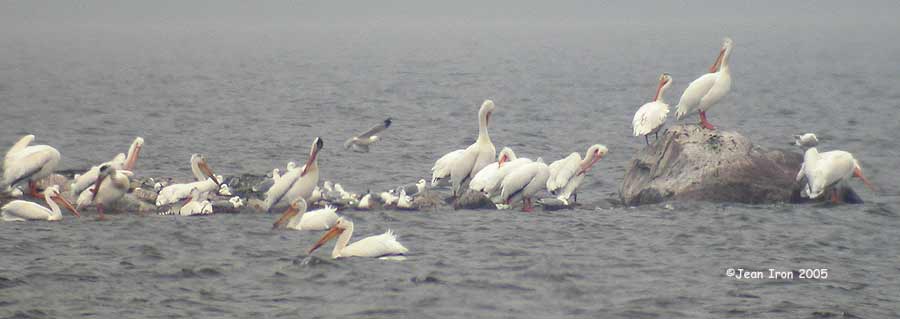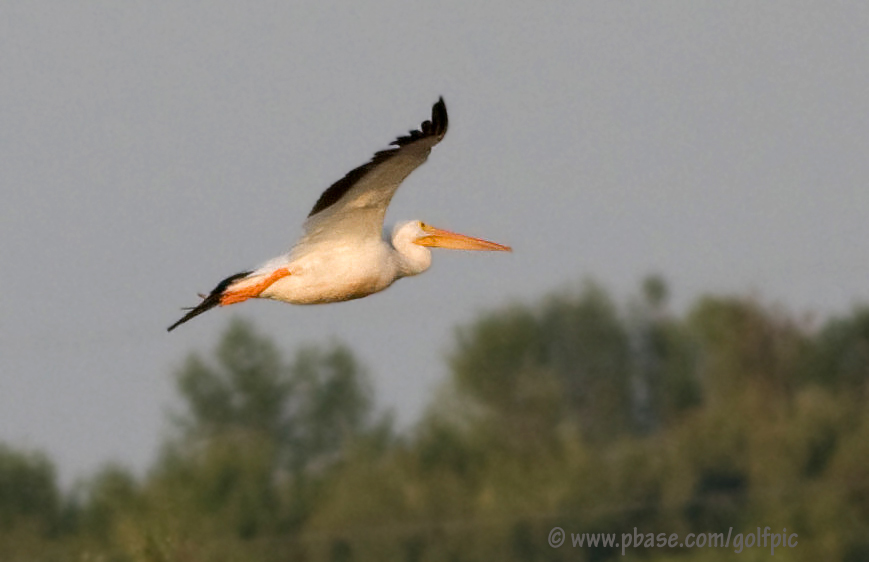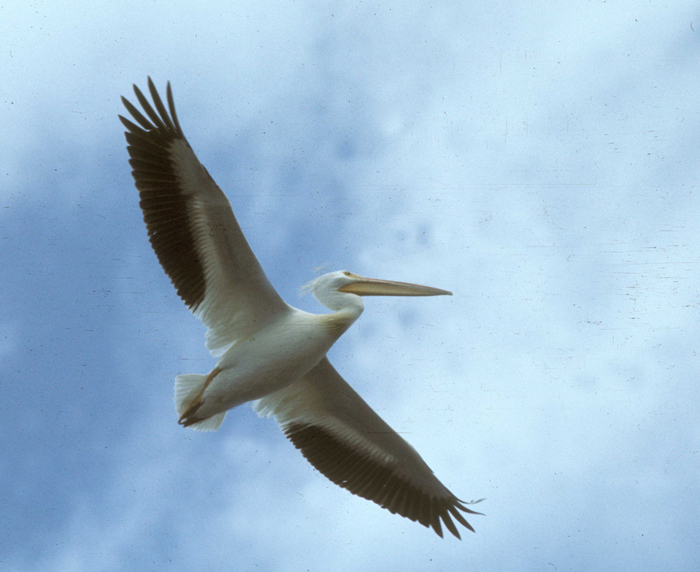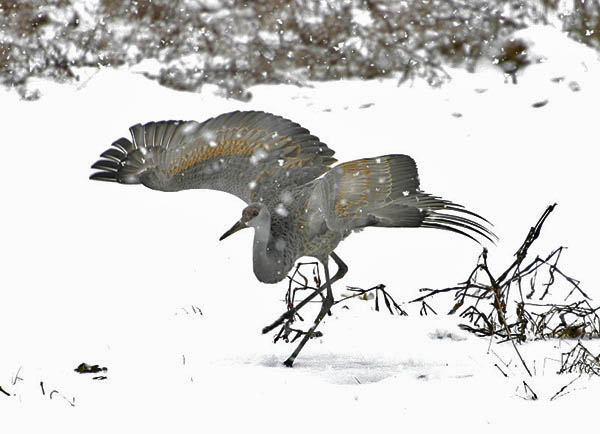June 9 2013 (Sunday) Sault Ste Marie and Area
Leader: Kirk Zufelt.
it was a beautiful day in Northern Michigan and 8 birders joined me for a romp around the eastern upper peninsula. We started the morning with a couple of Kirtland's Warblers on territory. A assortment of other breeding warblers were noted including Palm Warbler in one of the few nesting areas in Michigan. The next stop produced a very cooperative and vocal Connecticut Warbler with crippling views had by all in the scope. An Olive-sided Flycatcher allowed prolonged study before we headed up to Whitefish Point. At the point a trio of very different looking Sanderlings one in very white basic plumage, the other in very early alternate plumage and the third in more advanced alternate plumage caused us some confusion until we twigged. Two or three Piping Plovers were observed. Numerous Merlins and Broad-winged Hawks were about plus a sizeable flock of Blue Jay odd for this time of year. After lunch we headed east and ended the trip with LeConte's Sparrow vigorously defending its territory at Munoscong Pot Holes preserve.
It was a great day and thank you to all the participants- many who had driven many 100s of kilometers to attend.
June 11 2011 (Saturday) Sault Ste. Marie, Algoma
Leader: Kirk Zufelt.
The OFO field trip from Sault Ste. Marie exploring select locations on the eastern upper peninsula of Michigan started off this morning with cool temperatures at 0520 hrs. We were viewing a very cooperative Le Conte’s Sparrow in the scope before 0600. Then the rain started and the temperatures plummeted to what would be considered “bad” for April. We proceeded to the Trout Lake area were despite persistent moderate to heavy rain a Connecticut Warbler performed its routine proudly from high in the Black Spruce “canopy” until the group had all had good looks. Although the rain was annoying that combined with the cool temperatures kept the bugs which are typically quite extreme to a remarkably negligible level. After a few stops we all needed coffee and some time to warm up and dry out in what seemed like a rather incongruously (given the weather) named Paradise, Michigan. During a brief abatement in the rather torrential downpour we toured a quite productive road through pristine bog habitat and managed to find Yellow‐bellied and Olive‐sided Flycatcher’s along with breeding Palm Warblers, Alder Flycatchers and several other warbler species. We headed back towards the Sault stopping at a few spots for Brewer’s Blackbirds, Clay‐colored Sparrows, Bobolinks etc. but as often is the case at this time of year we stuck out on Sharp‐tailed Grouse (which were undoubtedly huddled up some place dry). Given the cold rain we skipped the walk out to Whitefish Point for Piping Plovers.
Despite the adverse conditions we found most of what people were looking for. The 5 keen birders that joined me had mostly driven a very long way to partake in the outing and they were all very congenial and enthusiastic despite the less than welcoming climatic conditions.
Their company was much appreciated.
June 6 2025 (Friday) Rainy River
Leader: Leo Weiskittel, Kiah Jasper, Alessandra Kite.
14 birders joined us for OFO?s annual Rainy River trip, hailing from all parts of Ontario and beyond to explore this unique and secluded section of the province. Leo had spent 4 productive days scouting the region for target species in order to determine the best possible itinerary and ensure a fruitful outing for participants. We began our first morning at Spruce Islands Provincial Nature Reserve, driving slowly along Highway 619 as it bisected this isolated boreal habitat. This produced a variety of breeding songbirds including Yellow-bellied Flycatchers, Lincoln?s Sparrows, and Golden-winged Warblers, with our highlight being the cheery voices of 4 Connecticut Warblers singing from deep within the bog. We also encountered a few pairs of Canada Jays with sooty young in tow, a female Black-backed Woodpecker inspecting a tree cavity, and 12 White-winged Crossbills feeding on spruce cones. Our next stop was Gouliquer Road, where open shortgrass fields host many western specialities. Though it was fairly late in the morning by this time, a thorough check yielded a single Sharp-tailed Grouse, a flyover flock of American White Pelicans, excellent views of a male Northern Harrier, and good numbers of Sedge Wrens, LeConte?s and Clay-coloured Sparrows, Western Meadowlarks, and Brewer?s Blackbirds. Some members of the group obtained close looks at 2 pairs of Upland Sandpipers as they foraged near the roadside. En route to our next site we observed a few Sandhill Cranes, Wilson?s Snipes, more Brewer?s Blackbirds, a singing Yellow-throated Vireo. With the noon heat catching up to us, birding along Blue Road 3 was somewhat slow. The highlights were a Red-headed Woodpecker and a group of Black-billed Magpies, which were our first for the day. We decided that this was a good time to end the morning and planned to reconvene after an hour?s lunch break. We reassembled at the Rainy River Sewage Lagoons, where 3 processed cells with overgrown cattail margins serve as nurseries or staging areas for a collection of waterfowl, shorebirds, and marsh species. Ducks included several breeding pairs of Blue-winged Teals, Northern Shovelers, Mallards, and Ring-necked Ducks, a late Redhead, and a female Common Goldeneye with ducklings in tow. Singing Pied-billed Grebes, pairs of American Coots, a late Pectoral Sandpiper, and a stunning flock of 22 Wilson?s Phalaropes were also present. Several foraging Soras provided unobstructed views for the group. From here we patrolled a few roads west of Highway 600, scanning wetlands and agricultural fields for targets as we worked our way up towards Harris Hill. Mostly owing to the time of day, this was unproductive until we reached Kreger Road and followed it to the Lake of the Woods shoreline. Looking out towards the Sable Islands, Common Terns, Double-crested Cormorants, and large groups of American White Pelicans became omnipresent. Though our primary target for this site was not initially present, other highlights included a Common Nighthawk kettling with pelicans, an adult Sharp-shinned Hawk pursuing a flock of waxwings, and a pair of Broad-winged Hawks soaring overhead. Finally, a breeding-plumaged Franklin?s Gull flew in and joined the gull flock loafing on a distant sandbar. We eventually tallied 4 individuals of this lovely prairie specialist. Before we departed Kreger Road, Kiah spotted a Marbled Godwit flying north over the Sable Islands. It was seen by all participants, with at least a few obtaining good scope views. We continued along Highway 600 until we reached a field where Leo had consistently found a pair of Great Gray Owls hunting in broad daylight. Unfortunately there was no sign of these birds, though we were quickly consoled by an even better find! For several minutes, we were treated to remarkable views of a Western Kingbird sallying for insects from a power line. This species is a rather rare and irregular visitor to the Rainy River area, and certainly an auspicious means to cap off a productive first day. We reconvened the following morning on Gouliquer Road, with many in the group hoping to finally obtain adequate looks at a Sharp-tailed Grouse after the previous day?s lacklustre views. Though Leo had found this hallmark Rainy River species to be plentiful and fairly conspicuous only a few days before the trip, it was now just past the lekking season and the grouse were in hiding. This time, only 1 was seen by a single participant as it flushed into a far field. Fortunately, it was hard to feel demoralized when the dawn chorus contained a whistling Upland Sandpiper, many Sedge Wrens and LeConte?s Sparrows, uncountable Bobolinks, and a few Western Meadowlarks. We then returned to Spruce Islands Provincial Nature Reserve, where we were quickly treated to many of the same boreal species we had observed the preceding morning, including a pair of Black-backed Woodpeckers, a trio of Canada Jays, singing Golden-winged and Connecticut Warblers, and a host of other songbirds. A most unexpected sighting was a pair of adult Bonaparte?s Gulls flying fairly low over the road, perhaps breeding in the extensive surrounding peatlands. Shortly afterwards, an American Three-toed Woodpecker called several times from a dense stand of Black Spruce and was heard well by the entire group. It eventually drummed twice, but did not reveal itself. Adding to the list of shy spruce denizens, 2 Boreal Chickadees called consistently well back from the road. With one target still on the menu, we worked our way towards Wilson Creek Road and drove slowly in the hopes of turning up some Sharp-tailed Grouse. En route, a few of us spotted a flock of 7 Yellow-headed Blackbirds flying north over the highway, though unfortunately they could not be refound for the group. Our efforts on Wilson Creek Road quickly paid off, with 5 Sharp-tailed Grouse flushing from a ditch as we approached, circling briefly over our convoy before vanishing in an area of tall grass far out into a field. We made another unsuccessful pass at the Great Gray Owl on Highway 600 before moving north to Lake of the Woods, where mature deciduous forest intersects with a sandy shoreline. Singing upon our arrival was a Black-billed Cuckoo, 2 Yellow-throated Vireos, and a good assortment of warblers. Most surprising was a beautiful Olive-sided Flycatcher perched on a dead snag, which we presumed to be a late migrant. On the lake we spotted several species of ducks, a locally scarce Caspian Tern, and a large colony of Double-crested Cormorants and American White Pelicans containing well over a thousand birds. A sizable flock of pelicans provided excellent views as they foraged in a sheltered lagoon. By this time it was mid-afternoon, and we elected to wrap up our final day here. Afterwards, few participants were able to spot some birds Leo had staked out in the preceding days but evaded us during the trip, namely Yellow Rail and Great Gray Owl. Other fun extracurricular finds included a nesting pair of Piping Plovers, a Whimbrel and more assorted shorebirds, and a hunting pair of Long-eared Owls. Leo Weiskittel
June 3 2022 (Friday) Rainy River
Leader: Colleen Reilly, Dave Milsom.
OFO birders participated in the annual Rainy River fieldtrip. Scouting for the trip had been difficult with much local rain and flooding prior to the event. But fortunately the sun shone for both days of the fieldtrip and everyone enjoyed some great birding. On June 3rd our first stop on Gouliquer Road produced numbers of Sharp-tailed Grouse, Brewer's Blackbirds, Black-billed Magpies, Western Meadowlarks, Bobolinks, Sandhill Cranes, and a single Upland Sandpiper. Next we visited Spruce Islands Nature Reserve where we quickly found several Canada Jays with young in tow, a few boreal forest warblers, but only distant song of Connecticut Warbler. Our stop at Rainy River sewage lagoons was very productive : 7 Eared Grebes in breeding plumage, a Red-necked Phalarope, 5 Wilson's Phalaropes and a White-rumped Sandpiper, 3 Soras, Purple Martins and Cliff Swallows among the hirundines, and an American Coot. The Marbled Godwit pair on River Road were in hiding. Our visit to the former Oak Grove Camp was fairly unproductive but fortune smiled on some of the group who missed the turnoff due to photographing a cooperative Golden-winged Warbler. Retracing their steps, they found a Western Kingbird ! Later our sidetrip on Kreger's Road to the Sable Island overlook resulted in great scope views of hundreds of American White Pelicans at their island colony, good looks at Bald Eagle and Olive-sided Flycatcher. Our last stop of the day at Harris Hill Resort surprisingly found no Yellow-headed Blackbirds, which had been common daily up to then, but many other passerines were noted including Purple Finch and Yellow-bellied Flycatcher. On June 4th we met at the corner of Road 600 and Wilson Creek Road at 4.45 am. We soon witnessed a lovely sunrise, multiple singing Sedge Wrens, 4 LeConte's Sparrows and 3 constantly calling Yellow Rails. Next we drove to Road 619 and the Spruce Islands Reserve where great views were obtained of a drumming American Three-toed Woodpecker and brief glimpses of a Boreal Chickadee. Our final stop of the morning was at Emo sewage lagoons where several ducks included our first Wood Duck. A nice group lunch was enjoyed at the Emo Inn before we headed back to Rainy River. Some of the group found 2 Marbled Godwits on Launthier Road and Yellow - headed Blackbirds at Harris Hill. Late evening drives led to Common Nighthawk, Woodcock and Eastern Whip- poor will sightings. On June 5th many of the group returned to Spruce Islands and were rewarded with photos of a singing Connecticut Warbler! A great trip which will be offered again in 2023. Group total was 130 species. Many thanks to co-leader Colleen Reilly for all her work, and shout out to Rob Cumming for his great hearing and observations. Also thanks to Michael Dawber of Rainy River for his pre-trip information. Dave Milsom
June 7 2019 (Friday) Rainy River
Leader: Nick Escott, Chris Escott.
Nineteen birders from across the Province arrived in Rainy River on June 6th eager to find some of the area's specialties. Many of them couldn't wait, so we headed out that evening along Wilson Creek Road. Patience was rewarded when we found a LeCONTE's SPARROW perched in a small willow giving everyone fabulous scope views for more than ten minutes. Soon afterwards a SHORT-EARED OWL flew in front of our motorcade as we drove slowly down the road. Rounding out the evening were the night sounds of AMERICAN WOODCOCK and EASTERN WHIP-POOR-WILL. The first CONNECTICUT WARBLER of the season had been found two days earlier so we decided to head there first thing on Friday morning, June 7th . Sure enough, the bird was singing non-stop in the tamarack and spruce woods along Highway 619. Next up was a known SHARP-TAILED GROUSE lek in a distant field along Highway 621. They weren't dancing as there were raptors in the area, but the heads of two vigilant birds were seen keeping watch. The first of a number of WESTERN MEADOWLARK was found on Worthington 3 Road, as well as a BLACK-BILLED MAGPIE, BREWER'S BLACKBIRDS and SANDHILL CRANES. Farther north were the first of many SEDGE WREN. Heading west on Blue 3 Road the only known MARBLED GODWIT did a raucous fly-by with a CLAY-COLORED SPARROW singing from a nearby fencepost. From there we drove south on Worthington 1 Road and again a LeCONTE'S SPARROW was spotted high in a willow bush affording everyone scope views. Rainy River sewage lagoons was next, and didn't disappoint with WILSON'S PHALAROPE. A quick stop in town produced CHIMNEY SWIFT and we then we headed for a picnic lunch at the old Oak Grove Camp. In addition to a colony of PURPLE MARTIN the group also recorded a RED-BELLIED WOODPECKER and a pair of YELLOW-THROATED VIREO. Driving north and east along River Road we saw a pair of RED-HEADED WOODPECKER at a nest hole, then on Antonson Road and another pair of RED-HEADED WOODPECKER. We were unable to make the boat trip to Windy Point as the pontoon boat that has served OFO well in the past was out of commission with a burned out motor and all the other boats were booked by fishermen. Nevertheless, most folks were able to get scope views of YELLOW-HEADED BLACKBIRD from the dock at Harris Hill Resort through the heat haze of an astonishing 34C. Throughout the day we had been seeing AMERICAN WHITE PELICAN flying overhead. We took a break from the heat and went for dinner in nearby Baudette, Minnesota. The only restaurant in Rainy River had burned down two years earlier so crossing the bridge to the U.S. for dinner was the only practical choice! Later that evening, back in Canada, some participants went owling while others went off on their own to explore the area. The owling group once again found SHORT-EARED OWL, then split into a half dozen who went to Fred's Marsh while the others continued driving the area roads in search of night birds (and had good looks at AMERICAN WOODCOCK and EASTERN WHIP-POOR-WILL). Fred's Marsh was not productive. Water levels again seemed too low for Yellow Rail, and few other birds were noted. Saturday morning we began the trip at the Highway 621 SHARP-TAILED GROUSE lek where we watched seven birds fly into the lek and, a few minutes later, start performing. From there we drove back to the Highway 619 location where most participants jumped the ditch and bushwhacked into the mosquito-infested woods on a deep cushion of moss where they were delighted with close-up views of a singing CONNECTICUT WARBLER. We then closed out the morning at Emo sewage lagoons where we found a great variety of waterfowl. Many participants spent time before and after the official one and a half day field trip, and we ended with 139 species overall. Rainy River is a unique ecosystem in Ontario. Alan Wormington was the first to recognize this, and anyone since then who has visited the region will certainly agree. We thank Dave Elder for spending two days with us scouting the area before the field trip started, and everyone who participated in the trip for making it a success.
June 3 2016 (Friday) Rainy River (two days)
Leader: Tyler Hoar.
Ontario Field Ornithologists 2016 Rainy River tour.17 Participants made the long trek to Rainy River this year. Weather was cool, windy, and rain in the evening. A total of 161 species were located on the trip . Highlights: 5 Trumpeter Swans, 3 of which were foraging in a muddy field used by Marbled Godwits and Sharp-tailed Grouse. Unlike southern Ontario birds. These swans want nothing to do with humans and kept a considerable distance from us. Bald Eagles widespread as usual. Sharp-tailed Grouse 12 birds at 2 locations. One of the locations appeared to be a lek with at least one bird still dancing in a very muddy field for uninterested females.Shorebirds 9 species including: Marbled Godwit at least 3 pairs were found this year with 2 of the pairs entertaining us daily. Red-necked and Wilson Phalaropes in the Rainy River lagoon the evening of the 2nd a solitary immature Franklins gull was located on a distant sandbar off windy point. American White Pelicans: several hundred seen with a flock of 168 birds soaring over Rainy River near Oak grove campground a definite highlight. Great Gray Owls: a few located at dusk and dawn hunting roadsides. Red-headed Woodpeckers: colony on Antonson rd remains vibrant. Eastern Whip-poor-wills, Common Nighthawks, Wilson's Snipe and American Woodcock: vocal in the middle of the night between the rain for those who ventured out to listen. Several Black-billed Magpies seen daily. 21 species of warblers : 1 Golden-winged Warbler hwy 521 north of Gleeman. Connecticut Warblers were present in much lower numbers than in the last few years. One provided clean, hard, and crippling views and great pictures roadside this year. In the bog 9 species of Sparrows including many skulking Lecontes, and Clay-coloureds. Brewers Blackbirds were widespread as expected. Western Meadowlarks more widespread than in previous few years. Yellow-headed Blackbirds: Windy Point and Rainy River Sewage Lagoons. Thank you to Michael Dawber for assisting me on this tour.
June 5 2015 (Friday) Rainy River (two days)
Leader: Tyler Hoar.
15 Participants made the long trek to Rainy River this year. A total of 149 species were heard on the trip Highlights: 6 late Tundra Swans passing overhead on the 6th. Bald Eagles widespread with 2 nests and one immature bird using hay bales as a perch. Sharp-tailed Grouse 10 birds at 2 locations. One of the locations appeared to be the a lek with at least one bird on a fence post doing a lazy version of its courtship dance. Marbled Godwit - 1 to 2 birds present near the lek seen both days. American White Pelicans. Several hundred seen with most observed from Windy point on the 6th. Long-eared and Great Gray Owls . Red-headed Woodpeckers 4. Eastern Whip-poor-wills, Common Nighthawks, Wilson's Snipe and American Woodcock vocal in the middle of the night once the moon rose above the horizon. Black-billed Magpies 20-30 seen daily. Connecticut Warblers several noted daily. One provided crippling views and great pictures to those who wanted to wade into the bog. 21 species of warblers. 10 species of Sparrows including 2 Nelson's and many Lecontes, and Clay-coloureds. Brewers Blackbirds were widespread as expected. Western Meadowlarks 5. Yellow-headed Blackbirds 41 on Windy Point and adjacent islands. Thank you to Michael Dawber and David Szmyr for assisting me on this tour.
June 7 2013 (Friday) Rainy River
Leader: Tyler Hoar.
19 keen and tired travelers made it to the far corner of the province. 17 even joined me out for the long walk past the big tree in Fred's marsh looking for Yellow Rails after dark. But unfortunately after much searching we all had to agree the rails were not there. After a dry spring, the Rainy River area recently received alot of rain which raised the Rainy River and Emo lagoons quite high. This may have limited the mud, but we located 15 species of waterfowl and a Horned Grebe in the lagoons .
The trip started with a convoy of birders on the road and 2 Marbled Godwits playing hide and seek with us in an adjacent pasture. After a few minutes They noisily flew up and over us. Everyone on the trip were able to see and be entertained by the Sharp-tailed Grouse. On Sunday morning a group of 7 grouse entertained us as they appeared to be taunting a Coyote in an open field.
Other Highlights: Western Meadowlarks, Black-billed Magpies were widespread across the fields. Multiple Leconte's Sparrows and Connecticut Warblers. At Windy Point visit we had Yellow-headed Blackbirds, American White Pelicans and a Forster's Tern. Multiple Whip-poor-wills were heard. On the the night of the 6th they provided the soundtrack for a large Northern Lights show.
A pair of Red-headed Woodpeckers who made sure all were given stunning looks. A couple of Bald Eagles nests. One of which was a massive nest which showed how strong White Pines are. Clay-coloured Sparrow, Brewers Blackbird, Bobolink, and Sandhill Cranes were widespread with many seen and heard daily
Misses: Yellow Rail, Piping Plover, Eared Grebe and Franklin's Gull. Total species for the trip: 138
Thanks to all who attended.
June 5‐6 2010 Rainy River
Leader: Glenn Coady
I had the pleasure to lead this year’s OFO trip to Rainy River on the weekend of June 5‐6. There were 16 participants on the trip, coming from places as varied as Ottawa, Dryden, London, St. Catharines, Thornbury, Toronto and Friendswood, Texas!
Our group observed a total of 132 species over the two days. Contrary to most years, there was very little to be found at either the Emo or Rainy River sewage lagoons (other than the expected species of ducks). A large, newly‐created third lagoon at Rainy River should make this site much more productive in the years to come. A favourite feature of our trip was the excursion to Windy Point. There we had very close views of the Yellow‐headed Blackbird colony, a pair of Sandhill Cranes, migrant White‐rumped Sandpipers and Sanderlings in breeding plumage, two Forster’s Terns and a pair of Piping Plovers at the nest.
Here are some details of many of the specialties of the Rainy River area that we encountered:
American White Pelican–scores of pelicans were seen each day flying over, on the ground, or in the water, at places like the Rainy River sewage lagoons, Budreau’s Oak Grove camp, the Sable Islands, Harris Hill Resort, Burton Island, Gull Rock, Quick Island and Windy Point.
Bald Eagle–we had many sightings of adult Bald Eagles (Rainy River lagoons, Budreau Beach, end of Kreger’s Road, Quick Island, Highway 600 at the River Road and other spots) and also saw a few year‐old birds as well (including one flushed from a roadside kill on Kreger’s Road).
Sharp‐tailed Grouse–both mornings we observed birds dancing at a lek on the west side of Highway 600 halfway between Kreger’s Road and Harris Hill. We also saw a bird on the morning of the 5th that was perched in a tree on the west side of Worthington Road 3.
Yellow Rail–it was generally a very dry spring at Rainy River, with appreciable rain only coming in the 10 days before our trip. Consequently, there were no Yellow Rails to be found in any of the hay fields in the area. or in the usually poorly drained areas along the east end of Wilson Creek Road. On our first attempt to find this species in the suitable wet sedge habitat of the Big Marsh north of Fred’s Road on Saturday evening with most of the group, we failed to hear any Yellow Rails at all (although we knew they had been heard there the night before). After missing them Saturday night, only four of us returned to the Big Marsh Sunday night, but our persistence paid off. About 9:20 p.m. we heard 2 Yellow Rails in the marsh (in which the water was the lowest that I have ever seen it) about 1.2 km beyond the big solitary elm tree. As we walked toward the clicking of the rails with the sun still above the horizon, I flushed one of the rails up from out of the marsh. Instead of flying away from us, it flew directly back at me, and crossed right past us at shoulder height, affording wonderful views of its yellow bill, neck and breast and its golden plumes on the black back. It flew about 40 metres and then weakly fluttered down into the marsh behind us, giving nice views of its white secondaries as it did. Definitely this was a trip highlight!
Sandhill Crane–this species continues to become more common at Rainy River, with paired birds seen at more than a dozen sites, among them Worthington Road 3, Blue Road 2, Wilson Creek Road, River Road, several sites along Highway 600, Kreger’s Road and Windy Point.
Piping Plover–the highlight of our trip to Windy Point was a pair found at a nest, seen defending the nest area from a female Yellow‐headed Blackbird that was foraging too close to the nest.
Marbled Godwit–one of the first species that we found on Saturday morning, a pair were seen standing on fence posts near our meeting spot at Highway 11 and Worthington Road 3. Later that morning, we found a pair defending a nest site (saw the female come off the nest) in a field on Blue Road 3. The male flew and circled low over our heads, and the agitated female flew right out onto the road behind our parked cars and followed us down the road and back to our cars allowing several participants to take nice photographs.
Forster‐s Tern–among the many Common Terns seen out at Windy Point, we also found 2 adult Forster‐s Terns feeding.
Black Tern–several Black Terns were seen flying over the Big Marsh north of Fred’s Road.
Northern Hawk Owl–early on the morning of the 5th, we found a Northern Hawk Owl perched high in a tree top to the northwest of the corner of Hartnell Road and Embury Road north of Blue Road 3.
Great Gray Owl–on a tip from Alan Wormington, who had scouted the area in early May, we looked for a nest that he had found in a Black Ash woods next to a clear cut on Highway 600. Although we easily found the nest on the south perimeter of the clear cut (presumbably an old Broad‐winged Hawk nest by appearance), on both days there was no activity and no adult owls were found in this area, where they had been actively nesting a month earlier, so we assumed this pair had failed. After our Yellow Rail outing on the 6th, we stopped at another area (further south along Highway 600) at dusk, to listen to Whip‐poor‐wills and watch the flights of American Woodcocks. While doing that, an adult Great Gray Owl flew right over our heads across the road, and began to call repeatedly from the woods behind us. The following day (Monday), I searched this woods next to Highway 600 where we had seen and heard this bird, and I found a female at a nest with at least 2 large young. Another trip highlight, to be sure.
Long‐eared Owl–on the south end of the River Road (east of the Camp of the Woods), we found a nest with 2 young Long‐eared Owls in it, and two larger young which had already left the nest into adjacent trees. These were right beside the road and afforded nice scope views for everyone.
Short‐eared Owl–we saw a bird flying around near the southwest corner of Wilson Creek Road and highway 600 on the evening of the 5th.
Olive‐sided Flycatcher–a male was seen singing in the same tall, dead tree on Kreger’s Road in which I saw one in 1996, 2001 and 2005. Site tenacity is a great thing! Everyone was able to view this bird through scopes.
Yellow‐throated Vireo–we found this rare resident of the oak stands singing in the riparian area of the Camp of the Woods directly beside the Rainy River.
Black‐billed Magpie–this species continues to become more common in the Rainy River area and we saw well over 200 of them throughout the weekend, with a family of 6 young recently fledged from a nest right opposite our cabins at the Harris Hill Resort.
Sedge Wren–although the area was fairly dry, we did hear and see this species at more than 20 areas where we found wet, poorly drained meadows. At a couple of sites we obtained nice scope views of this species.
Connecticut Warbler–almost our entire group got to see a singing male in the canopy of an aspen stand on the west side of Highway 600 south of Kreger’s Road.
Clay‐colored Sparrow–we found this species singing at dozens of roadside sites throughout the area.
Le Conte’s Sparrow–although this was a drier than average year, there were still many Le Conte’s Sparrows present in some of the wetter hay fields of the area. We had nice scope views of this species at a couple of locations and heard them at a couple of dozen additional sites.
Western Meadowlark–one of the first birds of our trip, we saw and heard them singing at several sites, including Worthington Road 3, Worthington Road 2, Blue Road 3, River Road, Wilson Creek Road, Byrnes Road and Highway 600.
Yellow‐headed Blackbird–besides two that were coming to the feeders of the Harris Hill resort (along with Purple Finches and Pine Pine Siskins), we observed many birds at very close range feeding on the shorelines at Windy Point and in the colony at the extensive cattail marsh there.
Brewer’s Blackbird–this species was as ubiquitous as ever, found at virtually all the roadsides we travelled.
Specialties of this area that we missed altogether included Eared Grebe, Wilson’s Phalarope, Franklin’s Gull, Red‐headed Woodpecker, Western Kingbird and Golden‐winged Warbler.
I would like to thank Alan Wormington for sharing information on locations where he had found several key species during his May trip to Rainy River for the benefit of our group.
I would also like to thank Cheryl and Gary Gauthier of the Harris Hill Resort, who shared their knowledge of local bird sites and provided us with safe travel to Windy Point and comfortable and friendly accommodations at their Harris Hill Resort.
Thanks also to Dave Elder, who so popularized this area with OFO members with his birdfinding guides and in leading outings here over two decades, and who has helped me so much over the years in learning where to find the specialties of the Rainy River area.
30‐31 May 2008 Rainy River
Leaders: Mary & Dave Elder.
12 birders spent 30 & 31 May birding the Rainy River area with guides Dave and Mary Elder. Heavy rain and thunderstorms on Thursday evening and night did not bode well but Friday dawned with a fine drizzle that eventually cleared off by mid morning. The area was experiencing one of the latest springs ever and the trees were just starting to leaf out. A total of 133 species were observed over the 2 day tour and included lots of American White Pelicans, 2 leks of Sharp‐tailed Grouse, 3 pairs of Marbled Godwits on territory, Red‐headed Woodpecker, 2 Red‐bellied Woodpeckers, many Black‐billed Magpies, Sedge Wrens, Clay‐colored Sparrows, LeConte’s Sparrows, Western Meadowlarks, Yellow‐headed Blackbirds and Brewer’s Blackbirds. Five brave birders walked (waded) into the Big Marsh and were rewarded with 2 calling Yellow Rails, one of which flushed twice for great looks. Sandhill Cranes were seen and heard frequently and 2 Piping Plovers were found on Windy Point.
Reported by Dave Elder.
3‐4 June 2005 Rainy River
Leaders: Dave and Mary Elder.
On 3-4 June 2005, Dave and Mary Elder led 17 birders on a tour of the Rainy River area. About 90 species were seen in total and everyone had good looks at everything. The special birds of the area were concentrated on and included American White Pelican, Sharp-tailed Grouse, Sandhill Crane, Wilson's Phalarope, Red-Headed Woodpecker, Black-billed Magpie, Sedge Wren, Yellow-throated Vireo, Connecticut Warbler, Clay-coloured Sparrow, LeConte's Sparrow (arm's-length views), Western Meadowlark, Yellow-headed Blackbird and Brewer's Blackbird. Best of all, at least 20 calling Yellow Rails (one briefly seen) were noted along a 1 km. section of wet grass meadow on the Wilson Creek Road. Due to lots of rain this spring, the fields were very wet and may have created lots of suitable habitat for the rails. Also, Eastern Bluebirds were seen in good numbers and Western Meadowlarks were more common than in the past 5 years. Unfortunately, no Piping Plovers were present on Windy Point for the second year.
Reported by Dave Elder
30‐31 May 2003 Rainy River
Leader: Dave Elder.
Fourteen really tough birders braved high winds, horizontal rain and cold temps on Friday morning to start the tour. By noon things had improved and Sat. dawned clear, mild and windless. A collective total of 131 species were found. Arm's length views of Le Conte's Sparrow, Connecticut Warbler and Mourning Warbler were exciting as were the half-hearted attempts at dancing by a group of Sharp-tailed Grouse on a gravel road. Area specialties found by the group included Eared Grebe, American White Pelican, Sharp-Tailed Grouse, Sandhill Crane, Piping Plover (perhaps the last bird in Ontario), Wilson's Phalarope (200+ on Rainy River sewage ponds), Franklin's Gull, Black-billed Magpie, Sedge Wren, Connecticut Warbler, LeConte's Sparrow, Western Meadowlark, Yellow-headed Blackbird and Brewer's Blackbird. A Red-bellied Woodpecker was seen by some participants staying at the Oak Grove Campground but could not be found on the tour. It is the third Rainy River District record for the species.
1‐2 June 2001 Rainy River area
Led by Mary and Dave Elder.
The 15th Rainy River Area OFO Birding Tour was enjoyed by 24 participants, a new high.
We noted 125 species in spite of a cold and rainy day one. Highlights were: four Eared Grebes at the RR sewage ponds, White Pelicans, Sharp-Tailed Grouse, Sandhill Cranes, Marbled Godwits, Wilson's Phalaropes, Great Gray Owl, five Short-Eared Owls, Red-headed Woodpecker (nest), Black-billed Magpie, Sedge Wrens, Northern Mockingbird, Golden-Winged Warblers, Connecticut Warblers, LeConte's Sparrows, Clay-Colored Sparrows, Brewer's Blackbirds and Yellow-Headed Blackbirds.
Record high water levels on Lake of the Woods prevented a boat trip to Windy Point. There is no beach on the Point and very little, if any, habitat for Piping Plover this year.
Reported by Dave Elder
